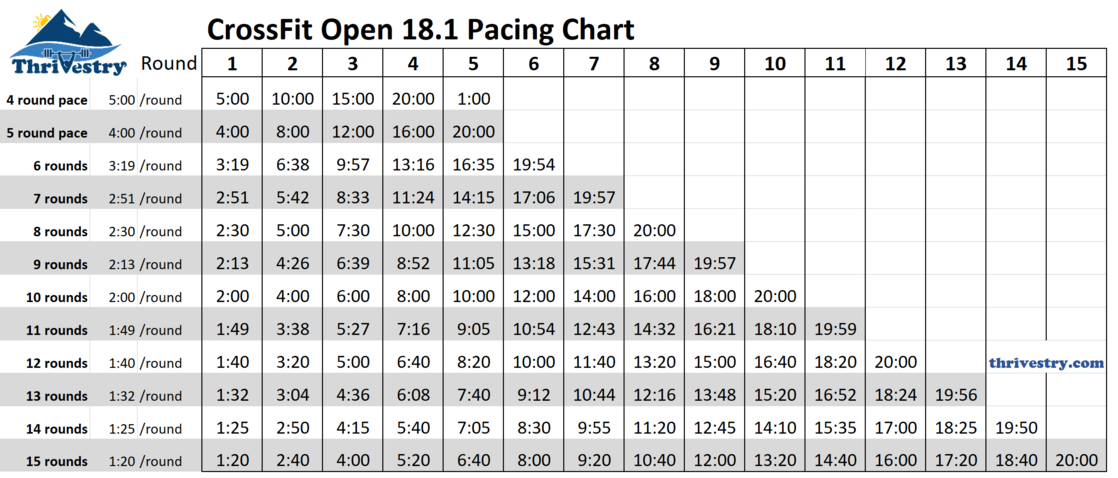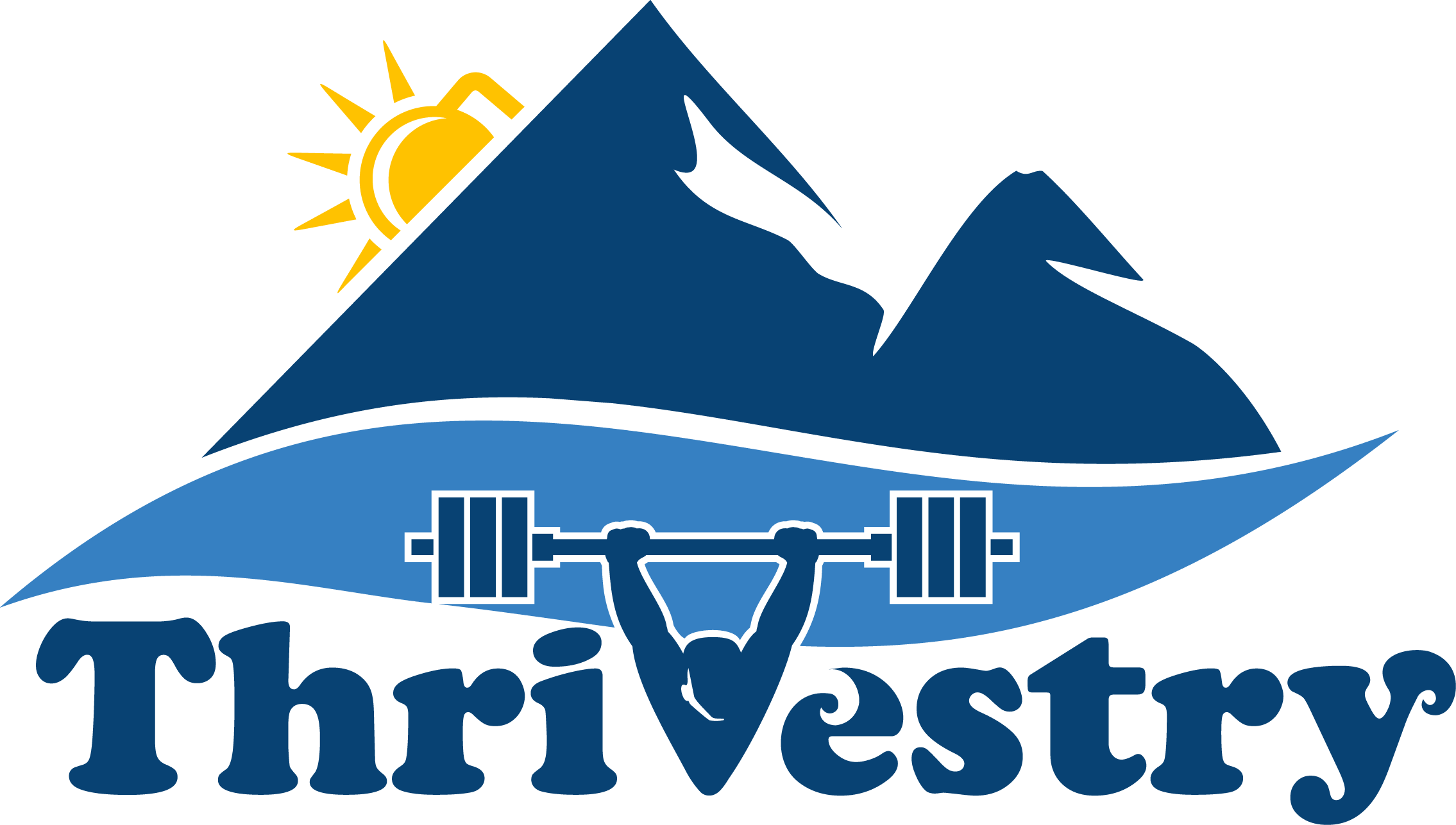CrossFit Open 18.1 Breakdown and Tips
CrossFit Open 18.1 Breakdown and Tips
This year is starting out with a real grip burner! I’ll cover tips to save the grip, how to pace, and other ‘gems’ that will help you perform your best to get this season started out right!
Overall
I think this is a great workout. I like the smaller sets. I like the combination of movements. I even like that it is an AMRAP!
Grip will be a key factor for many people. Even if you have the engine to perform these movements fast, you may hit a wall as your grip starts to fade. Using multiple strategies to save your hands for the later rounds will help performances significantly!
Another thing to point out is that we want to avoid hand rips, especially the first week of the Open! Using some of the strategies below should help you prevent rips, but making sure your callouses are shaved/moisturized, will make sure your hands stay healthy for the next 4 workouts.
As usual (and in particular for longer workouts like this), pacing will play a key roll. Don’t come out of the gate too fast and then blow up after minute 10 or 12. Have a plan and stick to it so you can keep steady progress all the way until the end!
For similar Thrivestry workouts see: “Bright Moon” (Feb 12, 2018), “Fade to Black” (Nov 11, 2017), “Backhoe” (Dec 12, 2017), “Baby 17.2” (Nov 27, 2017),
I went ahead and made a simple pacing chart to help you pace better. You can write the numbers in on your score card and have a friend/judge help you pace:

Toes to Bar
Most people will want to keep the sets “small”. That will be relative to everyone, but by coming off the bar regularly, we can save the hands and extra the ‘negatives’ that really tax the grip. By doing less negatives, our grip will be much better off in the later rounds.
Make sure you mix up the grip. Doing a little wider, a little narrower, mixed grip, etc., will save the grip for later rounds, but it will also prevent blisters and the potential for rips/tears.
I am a fan of bringing the knees high, and then flicking the lower leg up. Mechanically this is more efficient, and it doesn’t blow up the hip flexors as much. Most people won’t want to do a ‘butterfly’ on this one because they tend to tax the grip more. That said, if you can really knock these out and grip isn’t going to be an issue for you, give it a shot!
You will also want to point your toes on the toes to bar. Pointing the toes will ‘unlock’ the posterior chain and make it easier to get the leg up to the bar. You will also be less likely to “miss” the bar with the tip of your toes (because you can hit with any part of the foot, and the top of the foot is a larger surface than the tip of the toes).
If you are thinking about using gloves or grips, make sure you are familiar with them. Don’t try them the first time for the Open! That said, even if you wear hand protection for the first few rounds, and then strip them off, you may save you hands. It is always easier to take them off than put them on (if you decide to try them mid workout)!
Single Arm Dumbbell Hang Power Clean and Jerks
I am thrilled to see a ‘new’ movement with the dumbbell (new for the Open anyway)! If you have been doing Thrivestry, you’ll be familiar with db hang power cleans and db jerks/push presses. We also do a lot of hang dumbbell snatches. That said, there are some standards to be aware of to make sure every rep gets counted!
First, you must stand up fully to the top of the hang position BEFORE going into the power clean. That means a complete deadlift! In the heat of the moment, it will be easy to rip it off the ground into the first power clean and end up jerking it before the judge can yell “NO REP”! Make sure you hit this position every time you pick up the db (especially if you end up putting it down mid set).
The other standard to watch out for is that the dumbbell must touch the shoulder before going overhead. I believe this is to prevent people from mutating the movement into some sort of hang-snatch-press-out.
You will want to practice a few reps with your judge so you both are comfortable with the standards!
I recommend always starting the first 5 reps with your non-dominant hand. You will be a bit more ‘fresh’ and then you’ll be able to finish the set with your strong side. It will also be easier to transition from your weaker hand to your stronger one (from a coordination perspective).
If you have been practicing your hook grip on the dumbbells (like I have been telling everyone to), you will definitely have an advantage here. Even if you just use the hook grip for the earlier rounds when you are ‘fresh’, it will pay off in later rounds. Take note in the video about the dumbbells that have ‘tapered’ handles (there is a way to hook grip these if you know to make it work).
I believe that going between the legs is going to be the best strategy for the hang. You’ll be able to use both sides of your posterior chain more effectively, your torso will be more upright, and you won’t be causing additional stress on the trunk after all those toes to bar.
If the load isn’t too heavy for you, try to ‘blend’ the catch of the clean into the push press/jerk. It will save time and it uses less total energy.
Most people should do a push jerk, but if you are really strong in this position, a push press is also an option. Either way, make sure you get a good lock out! If you do get no-repped, don’t repeat the clean, just do the jerk again!
And lastly, be careful with the hand off. When you go to switch hands the dumbbell needs to be below the head/face. Don’t rush this and get no-repped!
Row
The calorie counter must be set to zero at the beginning of each row. You can do it, or your judge can. Talk to them beforehand if you want their help with this.
The damper should be a bit on the ‘high’ side. For shorter rows like this, a higher damper will pay off. “High” is relative term. Plan on setting it a few numbers higher than what you’d do on a 2k or 5k row.
Avoid ‘death gripping’ the rower handle! Have a looser grip to give the hands a bit of a break from all of the grip centric movements. Some people may benefit from putting the thumbs over the handle.
You should set the heels of the stirrups a little high, and then roll with fairly loose straps. If done correctly, you should be able to get in and out of the stirrups easily without having to mess with the straps. Your feet will be a bit less stable, but the strap will be closer to your shin and provide you with some safety. To get out of the straps, kick your feet up toward the fan and lift your heels. The straps should be just loose enough to get the heel cups off of your shoes, so you can pull you feet right out.
Side note: some shoes (Like the Nike Metcons) have a lip on the back of the heel. These may get caught on the heel cup of the stirrup. You may want to use different shoes if you have a pair that your are comfortable training in.
The first few pulls each row interval should start with the quarter stroke>half stroke>full stroke technique. The goal here is to use the most powerful part of the stroke to get the flywheel up to speed faster. The part of the stroke to emphasize here is the middle where the legs have the greatest mechanical advantage.
Watch out for early arm pulling! If you start bending your arms too soon, you will blow up your biceps even more (not to mention your grip). Keep those arms straight until the legs and hips have finished their job.
The tendency for most people will be to use the row to do some slower pacing. But when rowing for calories, the slower you row, the farther you go! What I mean is that if you row the same number of calories in 2 minutes versus 1 minute, the 2 minute attempt will have to go more meters (and use more total energy)! Instead of ‘cruising’ the row and using it as a pacing tool for the other movements, I think it is best to put a bit more effort into going a little faster. You do less total work, and then you can rest a bit more on the other movements.
That doesn’t mean that every row should be a sprint! The goal is to be able to get off the rower and go right into your first set of toes to bar. No chalk, water, or anything. After you bang out your first set, then chalk up. If you crush yourself on the row, you’ll pay for it on everything else!
Transitions
With relatively small sets, making sure you aren’t wasting time between movements is important. Instead of planning on resting or getting chalk between movements, try and plan your rests so they happen in the middle of the set of toes to bar or db clean and jerks. Force yourself to really hustle between movements and don’t accumulate a bunch of lost time as you wander between movements.
Repeats?
Generally, I am not a fan of repeats. If someone must do their absolute best to make Regionals and they royally screwed up the first time, they may want to do this one a second time. That said, with good pacing and strategy, a second time through shouldn’t improve one’s score much (if at all) and it could shred their hands. Not a good idea with 4 more workouts coming down the pipe!
If you are the person who always does better on the second try (or third), you need to figure out what you are doing wrong. There are no repeats in competitions, the Regionals, the Games… You need to nurture the ability to smack it out of the park the first time, every time!
Mindset
We must remember that the Open is just a test of where we are at – RIGHT NOW. Stressing about the workouts, wishing we trained differently, checking the leaderboard 14 times per day… These are all not productive uses of our energy. These are all things you cannot control.
Create a plan that you can control (when you will break things up, when to speed up, when to slow down, how to breathe, etc.). When you feel the butterflies in your stomach before the workout starts, take some deep slow breaths and remind yourself that what you are feeling is ‘paleo performance enhancers’ (adrenaline and the like). Don’t let it all slam into your system before the workout even starts, but understand that it is a good sign, and that you can harness it to help you have a great performance!
Have fun, and don't forget to take notes on your performances. Every competition is an opportunity to learn and get better for next time!
-jj

0 comments
Leave a comment